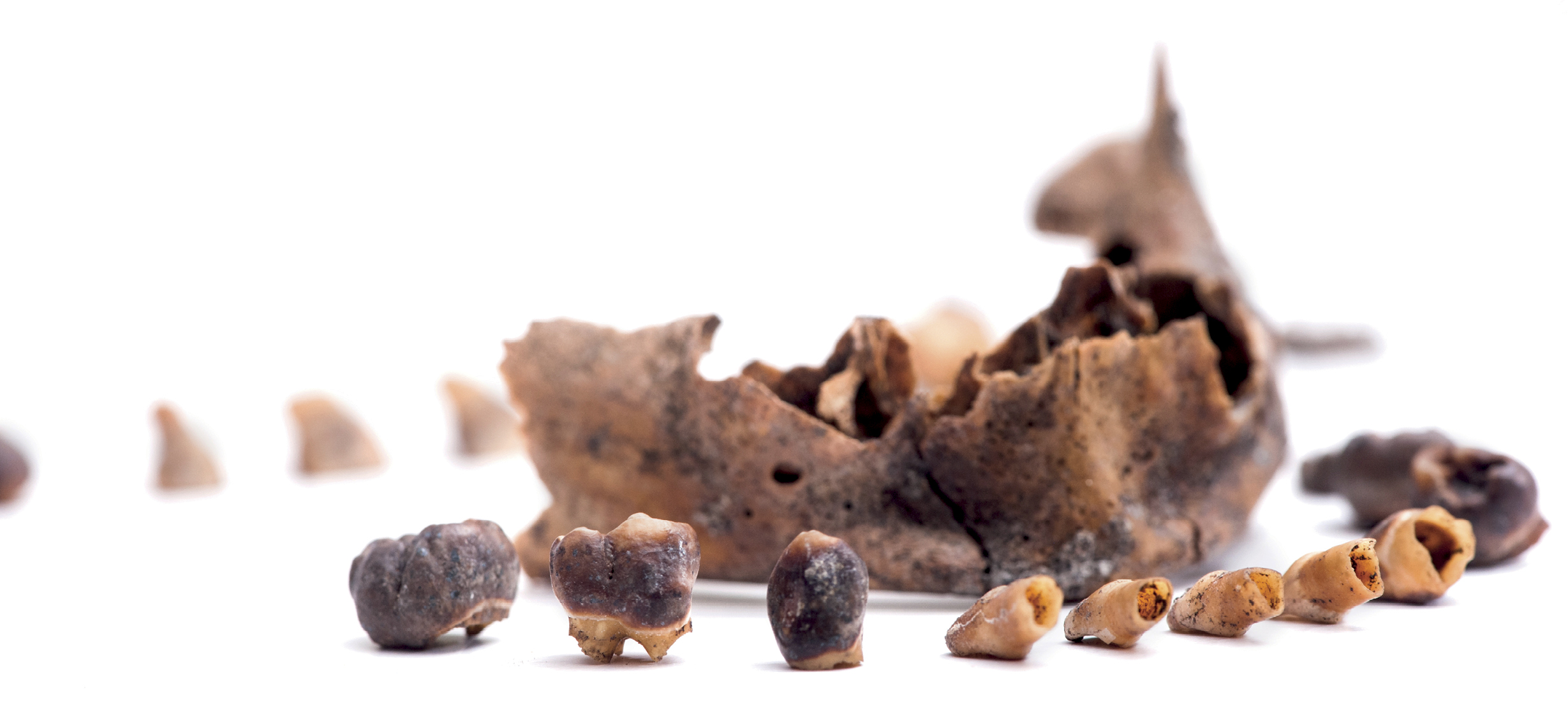Bones and teeth found at archaeological sites can provide important information about the individuals to whom they belonged, including anatomical traits, approximate age, and the presence of disease. It is also possible to partially reconstruct dietary habits by analyzing the concentrations of certain stable carbon and nitrogen isotopes preserved in the human skeleton. A group of researchers from the University of São Paulo (USP) used this approach to analyze fragments from 60 adults and children who lived between 3,100 and 1,500 years ago in the area now occupied by the Jabuticabeira II shell mound, an archaeological site located in Laguna, a municipality some 100 kilometers south of Florianópolis in the Brazilian state of Santa Catarina. The researchers gathered evidence of the breastfeeding habits among women in the hunter-fisher-gatherer population that inhabited the region.
According to the study, published in the Journal of Archaeological Science: Reports on May 10, newborns were exclusively breastfed until around 6 months of age, at which point other types of food rich in protein or carbohydrates were gradually introduced into their diet. Children were fully weaned between two and three years of age, at 2.3 years old on average. “We found no significant differences between the sexes regarding the length of time they were breastfed and the profile of their diet after weaning,” says Peruvian bioarchaeologist and lead author of the study Luis Pezo-Lanfranco, from the USP Institute of Biosciences (IB-USP). “But the topic still needs to be studied in more detail.” The Jabuticabeira II inhabitants did not appear to favor males when it came to food distribution, a practice seen in other cultures.

Léo Ramos Chaves
The ribs of children, were used to reconstruct the diet of ancient hunter-fisher-gatherersLéo Ramos ChavesBased on the amount of carbon and nitrogen extracted from the collagen and apatite (a protein and a mineral, respectively) found in bones and teeth, the group were able to infer the proportion of the main food groups—animal proteins, fats, and carbohydrates—in the diet of individuals at each stage of their life. “Using this data, we simulated a longitudinal study of the Jabuticabeira II population and determined the age at which infants were exclusively breastfed, when they started being given complementary solid foods, and when they were fully weaned,” says bioarchaeologist Sabine Eggers, a professor at IB-USP, curator of the Vienna Natural History Museum, and an author of the study. “We also compared the diets of the children to the adults.” In total, the study analyzed 106 fragments of teeth or bones (almost always ribs) from 39 adults and 21 children up to 18 years old, including six babies. Of the sample, 20 were men, 13 were women, and 27 were of unknown sex.
Teeth and bones are useful structures for inferring how long a newborn has been fed breast milk, in addition to other dietary elements. The structure of healthy teeth enables them to preserve chemical elements stored at the moment they are formed. Different sections of the same teeth originate at different stages of human development. The crown of the first permanent molar, for example, begins to form somewhere between six months and two-and-a-half years of age, and functions as a time capsule, preserving the elements of the diet consumed by the individual as a baby. Because the tooth is preserved for decades, it can be used to identify dietary changes over time. The ribs, meanwhile, store chemical evidence of the foods that have been consumed in the last six months of an individual’s life.
Breastfeeding served as a way of controlling demographic growth among ancient societies
In addition to providing information on dietary habits and cultural practices, the lactation period is a useful tool for estimating the expansion rate of prehistoric groups. Because lactating women are less likely to get pregnant, breastfeeding acts as a natural form of birth control. Sedentary populations with access to more resources in their immediate surroundings and those that practice agriculture tend to wean their children earlier, often between the first and second year of age. In these societies, demographic growth is faster. In nomadic cultures, populations are usually smaller. There is less food available and women may breastfeed children for up to three years as a way of increasing the time between pregnancies.
The Jabuticabeira II hunter-fisher-gatherer population does not fit into either of these basic models and can thus be interpreted as an intermediate or transitional case. The average breastfeeding period of just over two years indicates significant demographic growth, although slower than completely sedentary groups. “The Laguna tribes are believed to have been nomadic hunter-gatherers, but they had access to many marine resources and cultivated some plants,” says Paulo DeBlasis, from the USP Museum of Archaeology and Ethnology (MAE), who helped excavate Jabuticabeira II and other sites in the Laguna region and is also a coauthor of the breastfeeding study. “Several studies, including this one on breastfeeding, have shown that they had a stable economy and a good population density.”
Project
Small-scale food production and adaptation: Bioarchaeological evidence in prehistoric Brazilian coastal populations (no. 15/05391-3); Grant Mechanism Postdoctoral Grant; Principal Investigator Regina Célia Mingroni Netto (USP); Scholarship Beneficiary Luis Pezo-Lanfranco; Investment R$182.802,89.
Scientific article
PEZO-LANFRANCO, L. et al. Weaning process and subadult diets in a monumental Brazilian shellmound. Journal of Archaeological Science: Reports. May 10, 2018.


